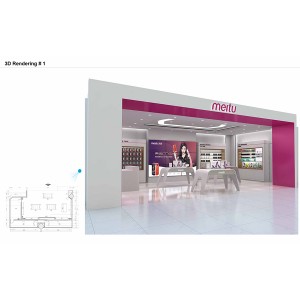Samh . 10, 2024 13:56 Back to list
Exploring Display Plinth Designs for Art and Exhibitions
The Display Plinth An Essential Element in Art and Design
In the world of art and design, presentation is just as crucial as the piece itself. One of the most understated yet vital components of displaying art is the display plinth. Often overlooked, the plinth serves a significant role in gallery settings, retail spaces, and even at home. This article explores the importance of display plinths, their varied uses, and how they contribute to the overall aesthetic experience.
What is a Display Plinth?
A display plinth, commonly referred to as a pedestal, is a platform upon which artworks, sculptures, or products are positioned for public viewing. These structures can vary in size, shape, material, and design, depending on the item's requirements and the intended viewing experience. Whether made from wood, metal, acrylic, or stone, a display plinth is designed to elevate the piece it supports, both literally and metaphorically.
The Functionality of Display Plinths
One of the primary functions of a display plinth is to provide height
. Elevating an artwork allows viewers to engage with it from a more comfortable perspective. This is especially important for sculptures and three-dimensional pieces, which may require a specific vantage point for optimal appreciation. Additionally, the elevation creates a defined space around the artwork, encouraging viewers to focus entirely on the piece rather than on distracting surroundings.Display plinths also serve a practical purpose. They help protect artworks from damage by keeping them off the ground and providing stability. In retail settings, plinths can showcase products in a way that invites customers to interact with them. This enhances the shopping experience by allowing consumers to appreciate the details and craftsmanship of items from different angles.
Design Considerations
display plinth

When choosing or designing a display plinth, several factors come into play, including material, size, and style. The choice of material can significantly affect the perception of the artwork. For instance, a minimalist acrylic plinth may harmonize well with contemporary sculptures, emphasizing their form without distraction. Conversely, a sturdy wooden plinth might suit traditional pieces, complementing their historical significance.
The size of the plinth is also critical. It should neither overpower the artwork nor diminish its importance. A well-proportioned plinth allows the piece to breathe, creating a balanced visual relationship. Furthermore, the style of the plinth should reflect the tone of the artwork. A sleek, modern plinth may look out of place supporting a classical statue, just as an ornate, highly decorated plinth might overshadow a minimalist piece.
The Impact on Viewer Experience
The presence of a display plinth profoundly affects how audiences engage with art. It invites viewers to approach the piece, fostering a sense of curiosity and encouraging a more intimate interaction. The elevation provided by a plinth often leads to a more respectful viewing experience, as it distinguishes the artwork from the surroundings and signifies its importance.
Moreover, display plinths can help set a mood or theme within an exhibition. By strategically placing artworks on plinths of varying heights and sizes, curators can lead viewers through a narrative journey, emphasizing contrasts or drawing connections between different pieces. This thoughtful arrangement enhances the overall storytelling aspect of an exhibition.
Conclusion
In conclusion, display plinths are more than mere platforms; they are pivotal elements in the realm of art and design. Their functionality, aesthetics, and ability to enhance viewer engagement make them indispensable in various settings. As art continues to evolve, so does the design of display plinths, constantly adapting to new trends and artistic visions. Whether in a gallery, a retail space, or a home environment, the thoughtful use of display plinths elevates the art of display, ensuring that each piece is appreciated in its best light. Investing time and care into selecting the right display plinth can transform a mere viewing into an immersive experience, fostering a deeper connection between the viewer and the artwork.
-
The Benefits of Electronic Shelf Labels for Modern Stores
NewsJul.01,2025
-
Space-Saving Retail Store Furniture Designs for Small Shops
NewsJul.01,2025
-
Slatwall vs. Gridwall: Which Store Fixture is Right for Your Business?
NewsJul.01,2025
-
Shop Fittings: Essential Elements for a Functional Retail Space
NewsJul.01,2025
-
How to Design a Minimalist Cosmetic Shop Display
NewsJul.01,2025
-
Creative Clothes Shop Display Ideas to Attract More Customers
NewsJul.01,2025


















































































































